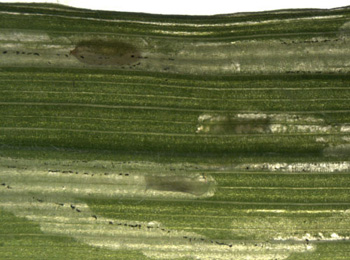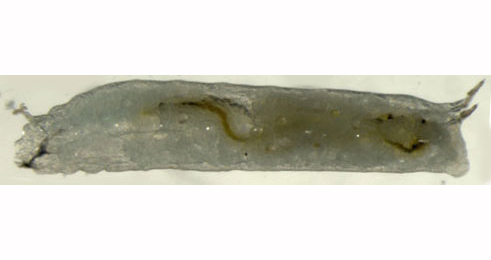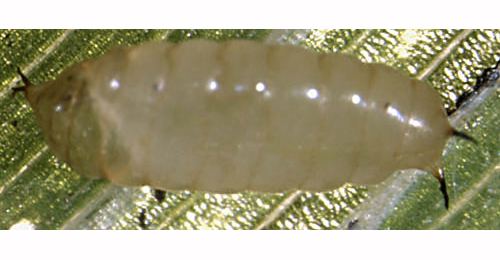|
||||||
|
Chromatomyia
milii (Kaltenbach, 1864) Phytomyza
milii Kaltenbach, 1864. Verh. naturh. Ver. preuss. Rheinl.
21: 248 |
|||||||||||||||||||||||||||||||||||||||||||||||||||||||||||||||||||||||||||||||||||||||||||||||||||||||||||||||||||||||||||||||||||||||||||||||||||||||||
Leaf-miner: A substantial linear mine. Pupation internal; posterior spiracles projecting through the epidermis (Spencer, 1976: 449). Elongated, shallow, upper-surface or lower-surface blotch, not infrequently several in one leaf. Frass in strings or pearl chains. Pupation within the mine (Bladmineerders van Europa) Larva: The larvae of flies are leg-less maggots without a head capsule (see examples). They never have thoracic or abdominal legs. They do not have chewing mouthparts, although they do have a characteristic cephalo-pharyngeal skeleton (see examples), usually visible internally through the body wall. The larva is described by de Meijere (1926), Dempewolf (2001: 204) and illustrated in Bladmineerders van Europa.
Puparium: The puparia of flies are formed within the hardened last larval skin or puparium and as a result sheaths enclosing head appendages, wings and legs are not visible externally (see examples). Posterior spiracles elongated (Spencer, 1972b: 95). The bifid anterior spiracles of the puparium penetrate the epidermis; the posterior spiracula are dagger-shaped, elongated and curved, and are anchored in the leaf tissue (Bladmineerders van Europa)
Hosts in Great Britain and Ireland:
Hosts elsewhere:
|



